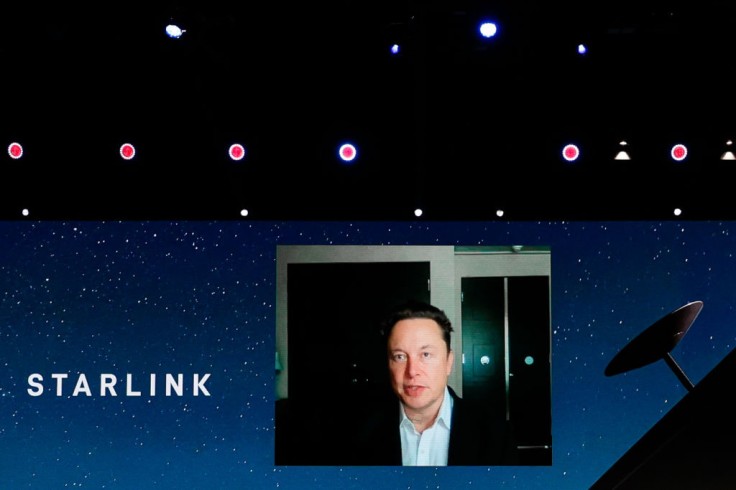
SpaceX CEO Elon Musk mentioned that the company is losing money making the current Starlink terminals in his virtual interview at the Mobile World Congress 2021 in Barcelona, Spain. Starlink has ways to go before hitting profitability, but that's not stopping SpaceX from going full speed ahead with global coverage operations beginning in August.
Starlink Satellite Broadband Service
The Starlink service is a subsidiary engineered by SpaceX. The service offers high-speed, low latency broadband internet with the help of low-earth-orbit satellites.
SpaceX and Starlink's goal is to launch a "constellation" of 42,000 satellites into lower-earth orbit by mid-2027 to provide Internet access all over the world, especially in underserved communities and remote areas normally not serviced by broadband providers.
Starlink is not positioned as a competitor of 5G and fiber but rather sits in the middle, filling in the gaps between the two.
Looks like a thin, flat, round UFO on a stick. Starlink Terminal has motors to self-adjust optimal angle to view sky. Instructions are simply:
— Elon Musk (@elonmusk) January 7, 2020
- Plug in socket
- Point at sky
These instructions work in either order. No training required.
Musk told the audience in the MWC it's currently delivering initial beta service domestically and internationally to 12 countries including the U.S., Australia, New Zealand, and parts of Europe. They plan to add more countries every month.
Originally, SpaceX president Gwynn Shotwell said that global coverage is possible by September, but Musk said it could actually begin service a month early.
A monthly subscription to Starlink currently costs $99. But if you want to purchase the kit, which includes a tripod, Wi-Fi router, and terminal to connect to the satellites, that would cost $499.
Losing Money in Starlink Terminal Production
Also during the virtual interview, Musk mentioned how Starlink loses money producing the current terminals, Business Insider noted. It costs $1,000 to make a terminal but it is currently being sold globally for $499, on top of the $99 subscription.
The company is currently subsidizing the costs and they are looking into building new internet terminals that will cost less to manufacture. Musk added: "We are working on next-generation terminals that provide the same level of capability, roughly the same level of capability, but costs a lot less. So that's one area of development for us."
In turn, the reduced cost of producing the terminals should eventually decrease the cost for the customers as well. From the $499 price tag, it could go down to $300 or even $250.
Musk takes pride in Starlink's phase-array technology, allowing for quick switches between one satellite to another even when it's moving rapidly overhead. There is no latency or jitters from one satellite to another, he says.
However, there are also areas of improvement for the terminals, Ars Technica added. This includes being more heat-resistant as some terminals were hitting "thermal shutdown" in areas with higher temperatures, like Arizona when they hit 122 degrees Fahrenheit, causing users to lose internet service for several hours.
It also does not have enough capacity to serve a huge number of customers in high-density areas. Musk stated that they're well-suited to low- and medium-density areas.
Read Also : Starlink Stocks for Sale? Elon Musk Plans to Go Public But Not Soon, Tesla Investors to Get Preference
Starlink Hitting 'Strategically Notable'Number of Active Users
Starlink was able to meet a "strategically important threshold" last week as well. The subsidiary now has 69,420 active users and it could be more since the time Musk posted the tweet last week.
All 72 orbital planes activate in August, plus many other improvements, enabling global coverage, except for polar regions, which will take another 6 months
— Elon Musk (@elonmusk) June 25, 2021
There is currently a pending application from Starlink asking the Federal Communications Commission to allow it to deploy up to 5 million user terminals in the US, Ars Technica added. Musk pointed out they are expecting about half a million active users within the next 12 months.
The company needs a bit more time before it can be profitable, with Musk estimating that it would cost $5 billion to $10 billion to deploy the whole high-speed internet service. Musk also mentioned listing for an initial public offering when Starlink cash flow is more predictable. He added he will give priority to long-term Tesla investors.
There are also agreements and partnerships in store for Starlink, including two "quite significant partnerships" with major telecoms companies.
Starlink has not announced when it will be exiting beta, even after announcements of global coverage in a few weeks. Ars Technica did note that SpaceX said it will deliver the Starlink preorders in the second half of 2021.









